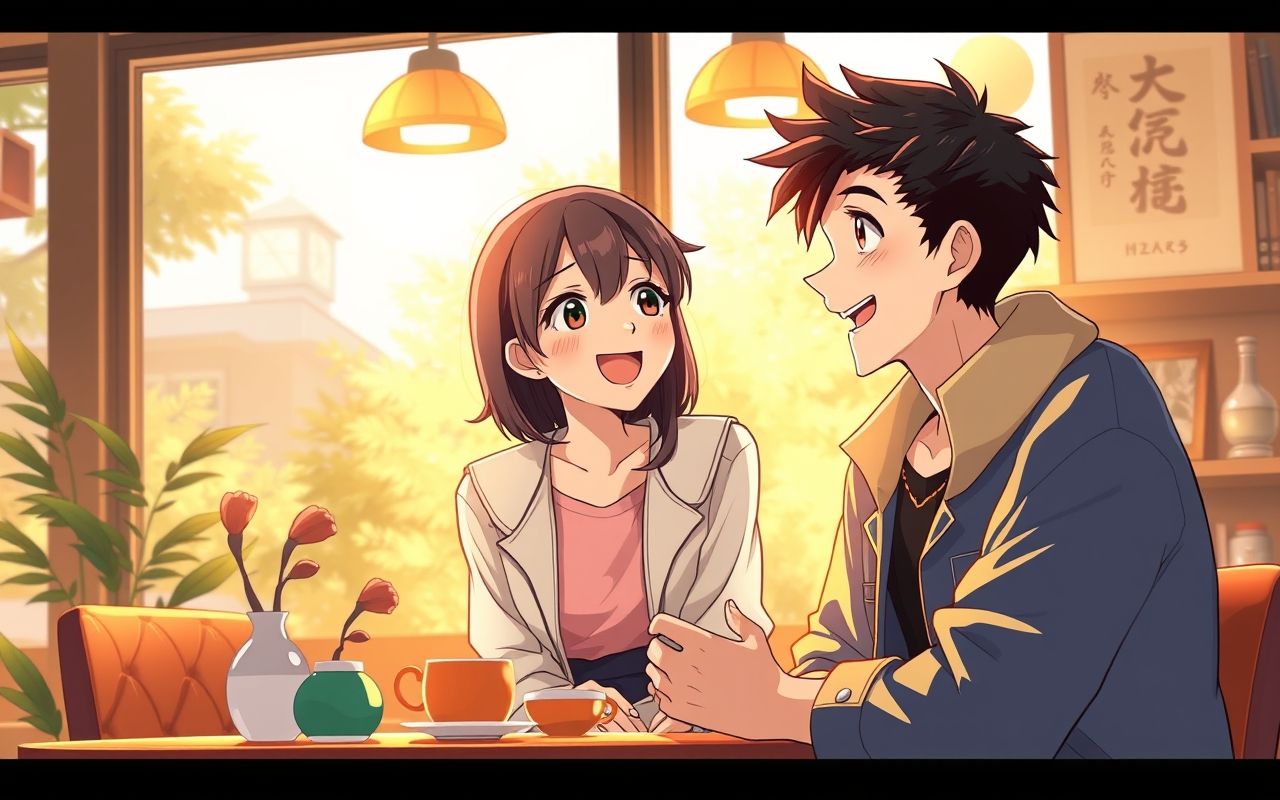
Nodding like a Japanese: Master of Aizuchi (相槌)
Nodding like a Japanese: Master of Aizuchi (相槌)
Have you ever talked to a Japanese person and noticed them constantly saying "Hai, hai," nodding their head, or making sounds like "Hee~," "Un, un"? 🗣️ Did you think they were getting impatient and wanted you to hurry up?
If so, you're mistaken! That's Aizuchi (相槌) – one of the essential "spices" that make Japanese conversations natural and smooth.
Living in Japan for over 10 years, I've realized that mastering the art of Aizuchi is even more important than memorizing advanced grammar. It's the key to building good relationships and showing the other person, "I'm listening to you!".
What's so "magical" about Aizuchi? 🤔
Aizuchi (相槌) roughly translates to "backchanneling" or "responsive phrases." These are short words or phrases used by the listener to:
- ✅ Confirm: "I'm still listening and keeping up with your story."
- 👍 Encourage: "That's interesting, please continue!"
- 🤝 Express empathy/understanding: "I understand how you feel."
Without Aizuchi, the speaker would feel very confused, unsure if you're really paying attention, and the conversation would become extremely awkward.
Levels of Aizuchi from basic to "Pro" 🏆
Don't just use「はい」! Pocket these types of Aizuchi to add color to your conversations.
Level 1: Basic agreement & confirmation
These are the words you'll hear the most. Use them to show you're still "online" in the conversation.
- はい (Hai): Formal, polite. (Use with superiors, elders, people you've just met)
- ええ (Ee): Polite but a little softer and more natural than 「はい」.
- うん (Un): Casual, informal. (Use with friends, family)
⚠️ Real-life tip: Avoid repeating a single word too much. Instead of "Hai, hai, hai...", try combining them or using other types of Aizuchi.
Level 2: Expressing surprise & interest 😮
When you hear interesting or surprising information, using these words will make the speaker feel their story is captivating.
- へえ〜 (Hee~): Drag out the vowel a bit. Like "Oh~, really!"
- そうなんですか (Sou nan desu ka?): Polite. "Is that so?", "Really?"
- そうなんだ (Sou nan da?): Casual. "Really?"
- 本当ですか (Hontou desu ka?): Polite. "Is that true?"
- うそ!(Uso!) / まじで!? (Maji de!?): Informal, casual. "Really!?", "No way!?"
Level 3: Showing understanding & empathy 💡
This is a higher level, showing that you're not just listening but truly understanding the issue.
- なるほど (Naruhodo): "I see", "That makes sense". Use when you've just understood something through their explanation. This is a very valuable word!
- たしかに (Tashika ni): "Indeed", "You've got a point". Expresses strong agreement with an opinion or argument.
- わかります (Wakarimasu): "I understand". Shows empathy for the other person's feelings or situation.
A secret from someone who's lived in Japan for 10 years ㊙️
- Nodding (頷き - Unazuki): Don't forget that nodding is also a very effective form of non-verbal Aizuchi. Combine a gentle nod when you say "un" or "hai".
- Timing is everything: Don't interrupt someone to use Aizuchi. Insert them into natural pauses when the speaker stops to breathe or think.
- Listen actively: Aizuchi only works when you're actually listening. Japanese people are very sensitive; they'll know if you're "faking it"!
Next time you talk to a Japanese person, try using a few of the Aizuchi above. You'll find the conversation becomes much more intimate and effective. Good luck! 💪
Lan tỏa kiến thức
Chia sẻ những điều hay ho với bạn bè